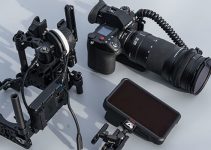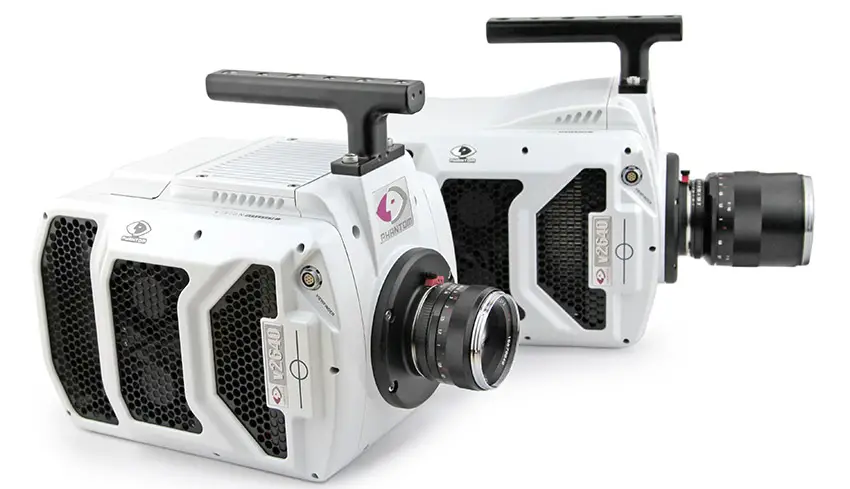As tech continues to advance and years go by, 4K is actually becoming a standard format for delivery for more and more creative professionals and production facilities. Increasing bandwidth of home connections and the need for manufacturers to find new ways to entice customers in buying new screens, TVs and cameras have brought us to the point that the vast majority of filmmakers around the world now have at their disposal cameras that can shoot pretty decent 4K videos.
Not only that, but these 4K files are now 10-bit, some even Raw, be it encoded internally or externally, and that means high data rates and an increased need for storage. As Armando Ferreira points out, most of us will need to evaluate what to choose as a storage solution soon. In the video below, he talks about the three most common solutions for video editing and backup one can currently get.
Indeed, the cost of storage has gone down, disks with unimaginable capacities are now on the market and they cost a fraction of what we used to pay for just five or six years ago, but at the same time we are also generating ridiculous amounts of data as we have never been doing in the whole history of digital age.
Hence, as content creators, we have to look for solutions that integrate into our workflow easily while taking advantage of the newest tech to avoid those long waits on data transfers or any choppy and lagging timelines when we need to do an edit quickly. There are three main solutions that Armando is presenting us:
The Samsung T5 is one of the most used SSDs in the market now. It’s small, cheap, and fast. Sounds like the perfect fit, right? It has gained a lot of traction with the release of the BMPCC 4K, thanks to the USB-C port that allows recording directly on the disk, and the T5 thanks to its size and speed it’s the perfect candidate.
Apart from that, it’s blazing fast, as it’s actually a new generation SSD, an NVME, and is a great tool to edit on the fly or to share footage when on the move.
Alas, the fact that it’s so small is also its downside. It’s easy to lose and if it falls it may break, and most of all, being a single disk it has no redundancy, neither can it be upgraded in capacity once you’ve bought it. If you lose data on it for whatever reason, well, you’re screwed. On the plus side, though, it’s so cheap that you can buy a couple without breaking the bank.
#2 – Lacie 2Big Dock (B&H, Amazon)
This option, the Lacie2Big is an enclosure meant to carry two standard 3.5″ hard disk drives. The system has a nice design with the classic Lacie style and has two slots for hot-swapping the drives. It can be set to RAID 0 or RAID 1. In the first case, you’ll be having a much faster system, we’re talking speeds that allow your NLE to access 4K files fast enough to edit in real-time just off it.
If instead, you go for the RAID 1, you’ll be basically having a hard copy of the first disk in real-time on the second one, so that if one fails your data is not lost. You will be paying for this redundancy with the speed of the other configuration. One nice add-on on this “Dock” model is the presence of a card reader in the base of the disk – a nice useful little touch.
This big box you see here is a NAS. That stands for Network Attached Storage, meaning that it’s basically a stripped-down server with a lot of slots for HDD that you can access through your network. The read and write speeds on this thing are crazy.
It is meant to be used by different users through the network, so if you have a team, all can access it to get the footage of the project you are working on. Obviously, it’s an expensive configuration, but much of the cost is in the disks.
If you start slow and you leave some of the slots empty, ready to be populated as you may need them, it’s actually not so off as an investment for your post-production workflow. Keep in mind that you will surely need some time to set it up properly.
So these are the options, cheap and portable but not reliable, cheap and reliable but not multiuser-friendly and finally reliable, and multiuser-friendly, but not cheap. What will be the right choice for you?
Do you want to future-proof yourself going all-in on a NAS, or will you keep it simple and hope that the SSDs won’t break? Let us know in the comments below.
[source: Armando Ferreira]
Disclaimer: As an Amazon Associate partner and participant in B&H and Adorama Affiliate programmes, we earn a small comission from each purchase made through the affiliate links listed above at no additional cost to you.
Claim your copy of DAVINCI RESOLVE - SIMPLIFIED COURSE with 50% off! Get Instant Access!




